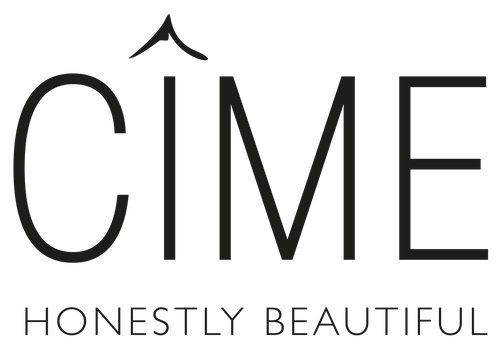People these days are far more conscious about keeping their body clean and healthy by opting for organic and plant-based nutrition. But also your skin and hair care products can penetrate deeply into the skin. That’s why it’s very important to know what you put onto your skin. We know this isn’t an easy task, so we would like to lend you a hand in finding out. We will explain in short which ingredients are best to avoid and which ones we recommend.
Which ingredients do I want to avoid?
- Conventional cosmetics often contain petroleum and mineral oil, that form a non-breathable moisture barrier on the top layer of the skin. Because of this, your skin becomes unable to eliminate toxins (the skin is responsible for a quarter of the daily detoxification of the body), which leads to clogged pores and a dull skin.
- Parabens and phenoxyethanol are cheap preservatives that disrupt the function of cells and are also suspected of being carcinogenic.
- Alcohols, when used in large quantities, can be very harsh on the skin and break down the skin's natural oily protection layer. Of course, this all depends on the quality and quantity of usage. When used in low dosages, alcohol can inhibit the growth of bacteria and can be used as a safe preservation substance.
The main rule for all organic skin care products is that they are certified free of GMOs (Genetically Modified Organisms), parabens, and mineral oils. They also can’t contain petrochemicals and synthetic colorants or perfumes. So you’ll be safer off with an organic product in any case!
Caution!
Note that the term 'natural' or 'organic' isn’t legally protected, so any manufacturer can use these designations without the products really being natural or organic. Therefore, always look for labels of an independent certification body, such as Ecocert, Natrue or BDIH.
Which ingredients do I want in my lip balm?
Organic skin care products work harmoniously with the skin, let it breathe and support its natural ability to balance and repair itself. Natural ingredients in their purest form – such as plant extracts, vegetable oils, floral waters and essential oils – are full of vitamins, antioxidants and essential fatty acids and will truly nourish your skin.Which ingredients are safe to use when talking about pure formulas?
- natural active substances, derived from plants or produced by biotechnology,
- natural or synthetic preservatives that are permitted by organic standards, such as benzoic acid, salicylic acid, sorbic acid and dehydroacetic acid,
- 100% natural fragrances and colorants obtained from mineral powders or natural pigments.(e.g. beetroot powder)
How to read the labels of your favorite skincare products?
Once you know which ingredients you do or don't want in your skincare formula, it’s a lot easier to read the labels of your skincare. We’ll give you some more information below about how such a label is composed. This way, next time you find yourself in doubt in the skincare aisle, you’ll be able to make the right selection with ease.INCI-, what?
Skincare products have to list all the used ingredients with their INCI name. INCI stands for "International Nomenclature of Cosmetic Ingredients" and is a list of internationally recognized, standardized names for all the ingredients that can be used in cosmetic products. It obliges all cosmetic brands to use the same names for ingredients, so the composition of their products can easily be analyzed and compared. This ingredient list is compulsory and must be included on the labels of personal care products.The active ingredients in a formula are listed in descending order of weight; the one at the top of the list is therefore the one present in the highest quantity.
If you're new to label reading, we suggest that you focus on the first five active ingredients in the list!
How do you recognize the most harmful ingredients on the INCI list of your skincare products?
- Parabens and phenoxyethanol are recognizable in products by the following INCI names: methyl paraben, ethyl paraben, propyl paraben en butyl paraben.
- Mineral oils can be identified on INCI lists by the words “mineral oil” or “paraffinum”. E.g. Paraffinum liquidum, Cera microcristallina, petrolatum.
- Alcohols: Alcohol denat, Alcohol, Propyl…
The Ecocert label
The Ecocert label is one of the main labels, delivered by an independent certification body, that is also approved by the French Ministry of Industry. To obtain this label, at least 95% of all plant-based ingredients in the formula and at least 10% of the total ingredients must come from organic farming.What about lip balms?
In many lip balms, petroleum is an important component. As far as we’re concerned, not exactly what you’d want to rub onto your lips. When using a lip balm you can't avoid ingesting a portion. If you’re using lip balm on a daily basis this can be as much as 4 sticks a year! On top, an important downside of petroleum is the fact that your skin becomes addicted to it. Once you start applying lip balm, you feel like you have to keep applying, since else your lips feel like drying out.All the more reason to opt for an organic lip balm such as Le Baume by CÎME. This multifunctional balm consists of beeswax and natural oils like coconut oil, apricot kernel oil and chiuri butter, that let your skin breathe and nurture it deeply. As an active component, Le Baume by CÎME contains 100% natural and organic chamomile extract, that ensures a gentle, yet highly effective soothing and restorative effect on the skin. The ideal balm for dry spots, cracked lips and skin irritations!


Back to Blog